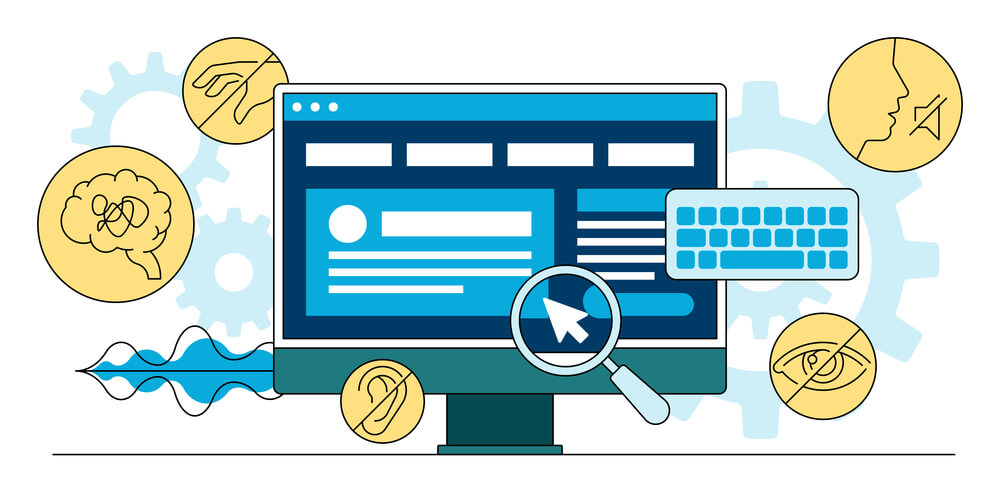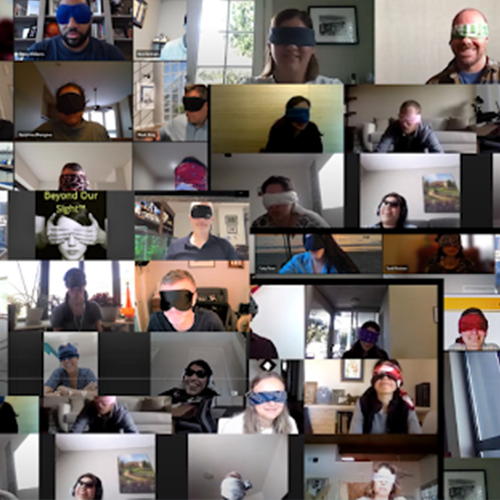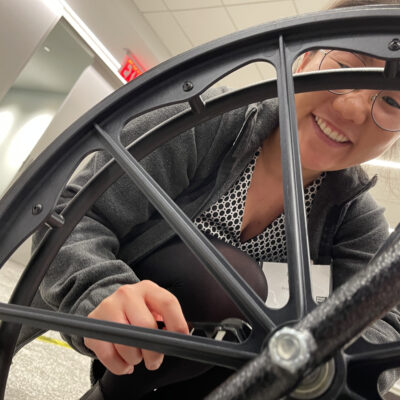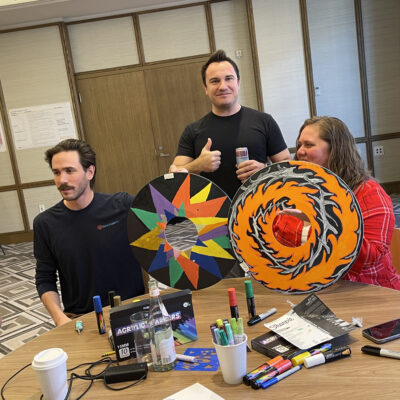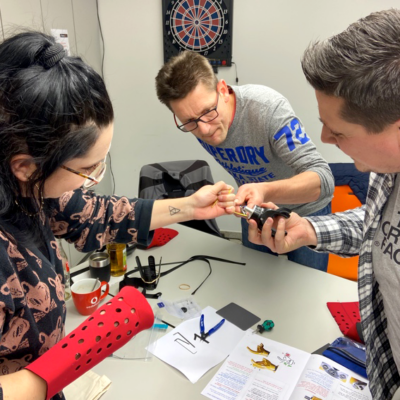Your team consists of diverse individuals with various abilities, skills, and talents. And each employee deserves equal access to the tools and resources to fulfill their job responsibilities without unnecessary barriers. Accessibility in the workplace means more than building wheelchair ramps or designating parking spaces, though.
In our podcast episode, Breaking Social Barriers, we sat down with The Hand Project founder Chris Gulley, ambassador Veronica Kidemi, and our Director of Programs Shannon Lane DuPont to discuss how their prosthetic hands are making a huge difference in recipients’ lives. They emphasized that more hands are needed than ever for amputees in developing countries to return to their daily lives.
But when it comes to the workplace, how should businesses accommodate individuals with disabilities such as amputees and people suffering from paralysis to make the playing field fair for everyone? In this article, we’ll explore what workplace accessibility is, why it’s essential, and the three best practices you’ll need to know to prioritize disability inclusion in the workplace.
What Does Workplace Accessibility Mean?
At its core, the word access means the ability to approach or enter – without barriers. An accessible workplace is one where every employee has the tools, resources, and accommodations they need to perform their job duties.
The Americans With Disabilities Act is a federal law that prohibits employers from discriminating against individuals with disabilities in all aspects of employment – starting with the application process. It also requires employers to provide reasonable accommodations to improve access for job applicants and employees.
Before diving into what we mean by reasonable accessibility accommodations, let’s first break down the different accommodations you must consider.
Accessibility Features at Work
Physical Accommodations
When you think of physical accommodations, what comes to mind? Automatic doors? Wheelchair-friendly office spaces? Onsite interpreters? All of the above fall under this category.
We’ve compiled a list of some of the most common physical accommodations you’ll need to consider for your workplace:
- Designated parking for employees [or job applicants] who would benefit from parking closer to the office
- Wheelchair ramps
- Stairlifts and elevators
- Braille keypads
- American Sign Language (ASL) interpreter
- Lactation room
- Flexible work schedules and remote work opportunities
- Ergonomic workstations
Digital Accessibility
With more companies embracing hybrid and remote operations, digital accessibility has taken center stage. The Web Content Accessibility Guidelines (WCAG) can guide your organization, including the barriers to look out for when making digital content accessible.
The bottom line? It’s about creating a digitally accessible environment that allows your employees to fulfill their job responsibilities.
Let’s take a closer look at a few reasonable accommodations you could put into place to improve digital accessibility:
- Offer screen-reading software
- Provide recordings of all virtual meetings
- Offer closed captioning during meetings
- Use inclusive language in all digital [and physical] content
- Require and provide microphone usage
- Offer audio format/delivery of all visual content
Attitudinal Accessibility
Beyond creating a physical and digitally accessible workplace, you’ll also need to assess your company culture in an honest way. By that, we mean observing and reflecting on how you, your colleagues, and your employees view people with disabilities. To get started, we recommend using the following questions as a guide to conduct this assessment:
- Do I underestimate the ability of a job applicant with disabilities to perform the job?
- Do I (or my colleagues/employees) show an ableist attitude toward coworkers with disabilities?
- Do I use ableist language (e.g., stating a concept “falls on deaf ears,” etc.)?
- Have I offered flexible work arrangements for my employees?
- When was the last time I reviewed the company’s accessibility features at work?
- Have I provided my employees with opportunities for building empathy and understanding?
- Do I offer DEI&B programs to help workers feel included?
Why Is Accessibility in the Workplace Important?
Besides the legal requirement to provide an accessible workplace, doing so also shows your employees that they are seen. In other words, imagine working with a visible or invisible disability in a workplace that doesn’t recognize, much less accommodate, what you need to perform your job. How might your morale be? The short answer is – not positive.
Low employee morale can negatively impact employees’ motivation, job performance, and even your ability to retain them. Creating an accessible and inclusive work environment can positively impact your company culture. That’s because your employees (and job applicants) will see that you value their needs. Shannon highlighted how The Hand Project helps people feel valued in the podcast, saying:
It goes out from the center, and it just affects the entire community, getting these people that functionality again, helping them get past the stigma that they’ve been facing. And just giving them a sense of hope that there are people that are looking to help them in this world.
Not only does prioritizing accessibility features at work boost morale for employees, but it also helps employers reach a larger talent pool, retain talent, and creates an overall more innovative and collaborative environment.
In short, show your job applicants and employees you value them by prioritizing accessibility sooner rather than later. But how can you make your workplace more accessible? Read on to learn how.
How to Offer Accessibility Accommodations at Work
Stay Up to Date on Legislation
Federal and state disability legislation is constantly evolving, and the way we work continues to change as well. So, understanding how to accommodate your employees best must start with legal compliance.
In addition to the ADA, you’ll also want to keep up with any changes made to the Family Medical Leave Act (FMLA), which guarantees specific employees paid medical leave in an instance of a severe medical issue. Or it also provides unpaid, protected leave of up to 12 weeks for other types of employees.
Here are a few recent bills and disability legislation you’ll want to keep a close eye on in the coming years to increase accessibility in the workplace:
- ThinkDIFFERENTLY About Disability Employment Act (H.R.7989)
- Disability Employment Incentive Act (S. 630 / H.R. 3765)
- Transformation to Competitive Integrated Employment Act (H.R. 2373)
- Disabled Access Credit Expansion Act (S. 2481 H.R. 4049)
Acknowledge that Workplace Accessibility is an Ongoing Process
Rome wasn’t built in a day. Similarly, creating an accessible workplace won’t happen overnight. Remaining open-minded and seeking feedback from your team will help you stay on top of creating accessibility features at work.
While there are countless ways for you to approach this process, we’ve put together a few essential factors to keep in mind:
- Creating access is about achieving an inclusive environment.
- Your job applicants and employees know what they need the most – so provide a safe space where they can discuss this with you.
- Creating access and inclusion is a team effort – from HR to all employees and everyone in between.
- Don’t be afraid to enlist experts who can help with planning, training, execution, and maintenance.
- Assess and reassess your company’s policies and make appropriate changes.
Invest in Resources & Continuing Education Opportunities for Your Team
To create a more accessible and inclusive workplace, you’ll need to equip your employees with the knowledge and the resources to make that happen. Take a look at the following resources and opportunities you could use:
- Provide annual or semi-annual training and compliance opportunities.
- Plan a team-wide event where your employees can learn more about differently-abled individuals and give back at the same time. For example, Sight Unseen is a unique and effective team building event led by visually impaired facilitators that builds lasting awareness and empathy as teams navigate tasks without using vision.
- Lead by example by listening to your employees and celebrating their differences.
- Offer Employee Assistance Programs (EAPs).
- Recruit an expert to help guide your team through this ongoing process.
- Get creative and incorporate improv to help your team explore new ways of understanding accessibility and inclusion.
Ready to Offer Accessibility Features at Work?
In 2023, the US Bureau of Labor and Statistics reported that 13% of the population have a disability – and 22.5% of those individuals were employed. That’s millions of employees who deserve accessibility so that they can perform their best.
Giving your entire team access to diversity and inclusion programs is an effective way to reinforce accessibility in the workplace.

